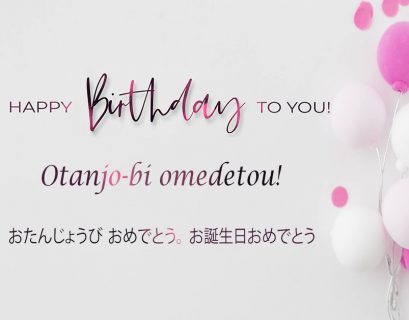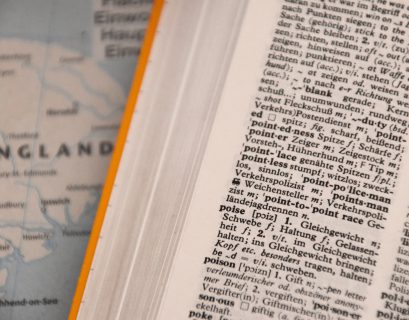As humans, we are all bound to make mistakes every now and then, whether knowingly or unknowingly. It’s a good thing that we were all brought up to be apologetic and take responsibility for our actions if and when we commit mistakes. Sometimes, saying ‘sorry’ can be as easy as ABC and yet sometimes, it can be rather difficult.
Here, we are not talking about how hard it is to apologise because you don’t feel the need to apologise for whatever it is that you did or didn’t do.
No.
We are talking about how difficult it can be to apologise to someone in another language, for example, saying sorry in Japanese language.
Picture this: You are taking a peaceful stroll through the cherry-blossom paved pathway of Shinjuku Gyo-en park in Tokyo. As your eyes are mesmerized by the lush greenery and the placid lake, you get so lost in the moment that you are not even aware of your surroundings. When all of a sudden, you walk straight into someone, bump her and she falls. She is crying and you keep on saying “I am sorry” over and over again, yet it doesn’t make her feel any better because she is Japanese and she doesn’t speak English. In this case, your apologies are just wasted efforts, aren’t they? Even if she does let it go, she would definitely doubt your sincerity, wouldn’t she?
You’d wish you knew how to say sorry in Japanese. Gomenasai!
Well, lucky you because should instances like this ever happen, we’ve got you covered.
In this article we are going to teach you different ways to say “I am sorry” in Japanese.
The Japanese are known for their mannerisms and politeness. They are always ready to take responsibility for their actions.
Learn the different ways to say sorry in Japanese language.
- Gomenasai (ごめんなさい)
Translation: I am sorry.
This can be used in any situation, be it if you hurt someone mistakenly or you have inconvenienced someone. It’s the easiest way to say ‘sorry’ in Japanese and it can also be used either sincerely or sarcastically.
You could also just simply say “Gomen”, without the “nasai”. - Honto ni gomen ne (本当にごめんね。ほんとうに ごめんね。)
Translation: I am really sorry.
When you are REALLY apologetic, just add “honto ni” before your “gomen” and your sincerity will be received. - Moshi wakenai. (申し訳ない、もうしわけない。)
Translation: I feel terrible.
Let’s say someone is going through a lot of trouble to help you with something and you feel bad to have dragged them into your problem. In this case, start with “Gomenasai” followed by “Moshi wakenai”. This is a polite way of saying “I am sorry for troubling you. I feel terrible.” - Sugoku gomen ne. (凄く、ごめんね。 すごく ごめんね。)
Translation: I am truly sorry.
If the person you are apologizing to doesn’t feel that your “Gomenasai” is genuine enough, adding “sugoku”, which can mean “extremely” will show your seriousness. - Sumimasen (すみません)
Translation: Excuse me.
Like the picture we’ve painted for you above, if you bump into someone on the street or anywhere else, add “Sumimasen” after your “Gomenasai “. - O-wabi mōshiagemasu (お詫び申し上げます)
Translation: I make a deep apology.
Another way of saying “I sincerely apologize”, this is a polite way of apologizing in Japanese. You can use this when apologizing to your elders or supervisors in your workplace. - Kokorokara owabi moushiagemasu (心からお詫び申し上げます)
Translation: Heartfelt apologies.
This is another formal apology usually used when professionals apologize for their incompetence or shortcomings. This will definitely be helpful for you at your workplace in Japan.
Body Gestures When Apologising in Japanese Language
When you say sorry in japanese to someone for something you have done or didn’t do, you have to show them that you mean it. Words alone are not enough, you have to do it with your body as well. In a country like Japan where bowing is the form of greetings, ensure that when you apologise, you – at the very least, tilt your head down. When it comes to apologising to your elders or boss at the office, do bow to show your sincerity and respect. Stand straight and make sure that your hands are kept straight down in line with your body when you bow. Or, you could hold your hands in front of your lower belly too. There you have it, different ways to say sorry in Japanese language.
Learn these simple phrases in Japanese to help your stay in Japan become much easier. If you want to know more about or learn Japanese language, do visit our website https://www.japan-academy.in.
Akal Japanese Academy
Akal Japanese Academy offers courses where you will get the opportunity to learn Japanese language, and get insights into the fascinating cultures and traditions of the Japanese. It will also help you find a job in Japan, and assist you with the visa application process. Courses are available both online and offline.
Until next time, sayonara for now!








